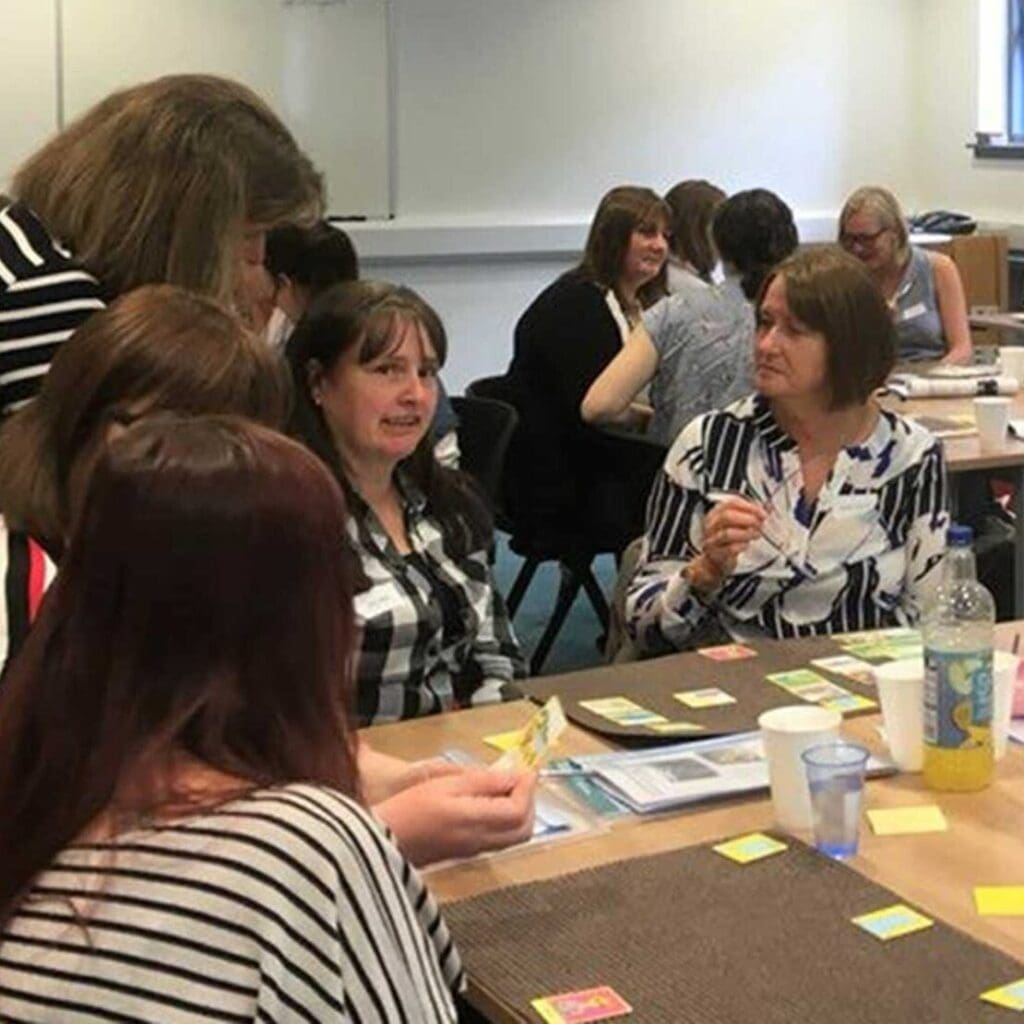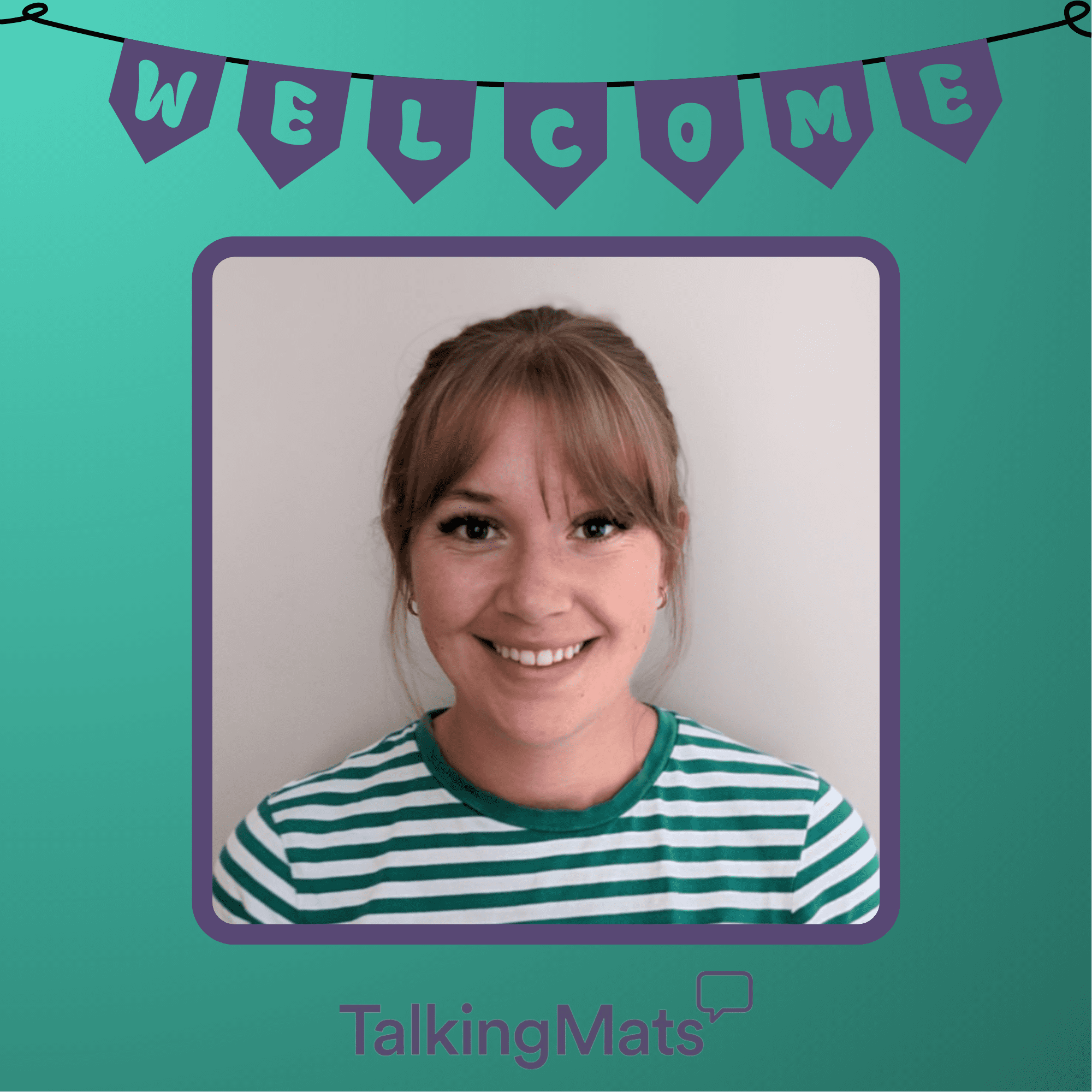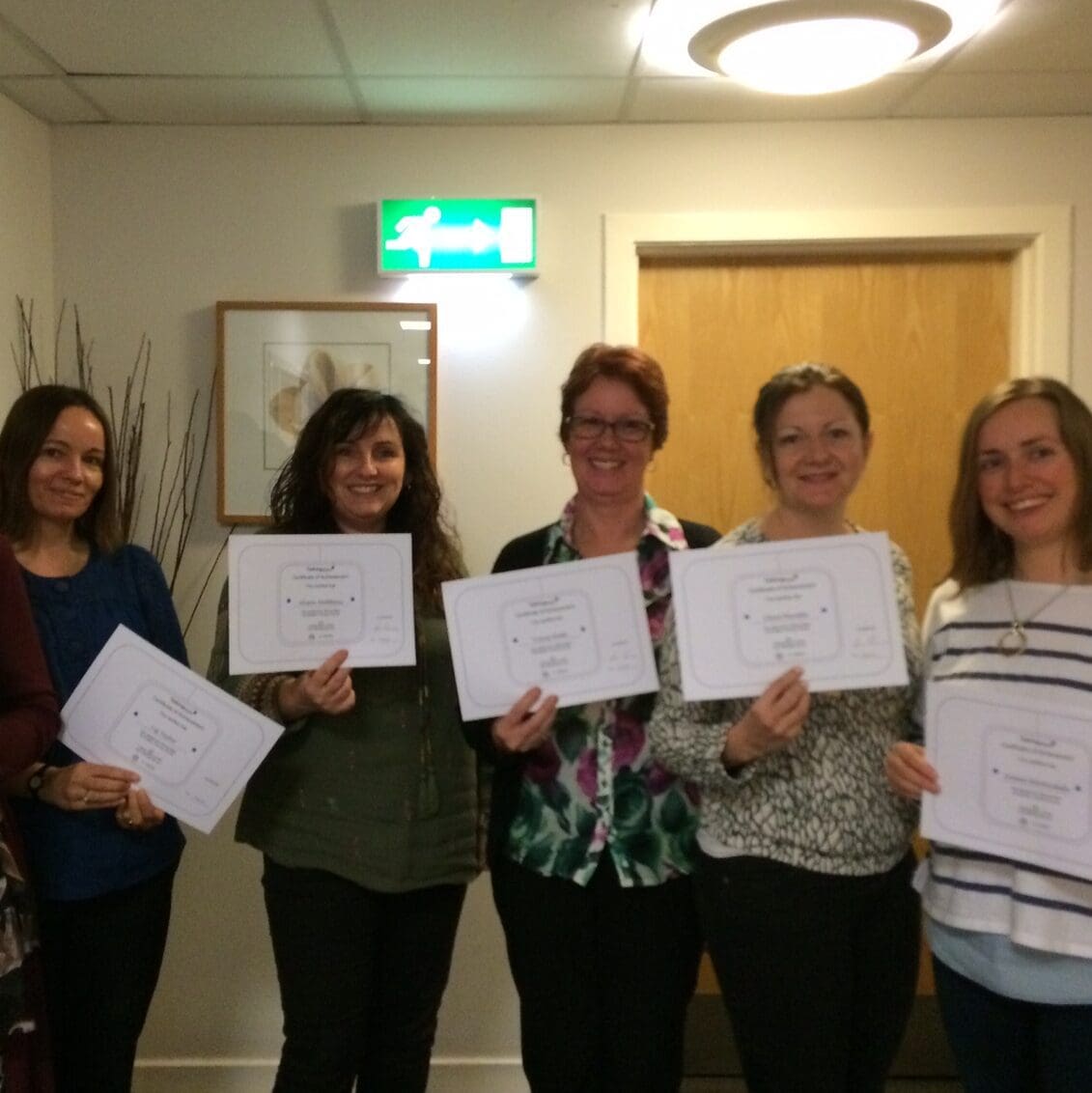
Do you need training to use Talking Mats?
Communicating—and supporting people who have difficulty communicating—can be complicated. Talking Mats was developed through lots of research looking at who can use it and how to use it well in different situations. Because of that, it’s really important to keep the core Talking Mats approach true to what the research shows. Our training is designed to make sure people learn the Talking Mats process that comes from this evidence.

Foundation training takes participants through all aspects of the Talking Mats process
- Introductions
- Chosing the right Top Scale
- Control
- Using open questions
- Personalising the mat
- Reviewing and reflecting
- Recording and agreeing next steps
All our training courses include hands-on practice and video examples as well as reflection on all these aspects of using Talking Mats.
A Talking mat creates a space that enables the person who is thinking about the Topic (the Thinker) to reflect and express themselves.
Training gives the Listener (the person facilitating the mat) time to reflect on the components of an effective Talking Mats conversation and identify which ones they are already skilled in and which ones they need to develop further. There are no short cuts to reflective practice training and we know Talking Mats foundation training has impact.

So do you need training to use Talking Mats ? The answer is a resounding yes . Training supports you to be an effective Talking Mats listener and get the most out of this versatile communication framework. So if you have not attended a course find out more about all the ways to become Foundation Trained below.
All our trainers are registered with Talking Mats and provide high quality training based on robust research findings. Only trainers accredited by Talking Mats are eligible to train others.
 Online training login
Online training login 






